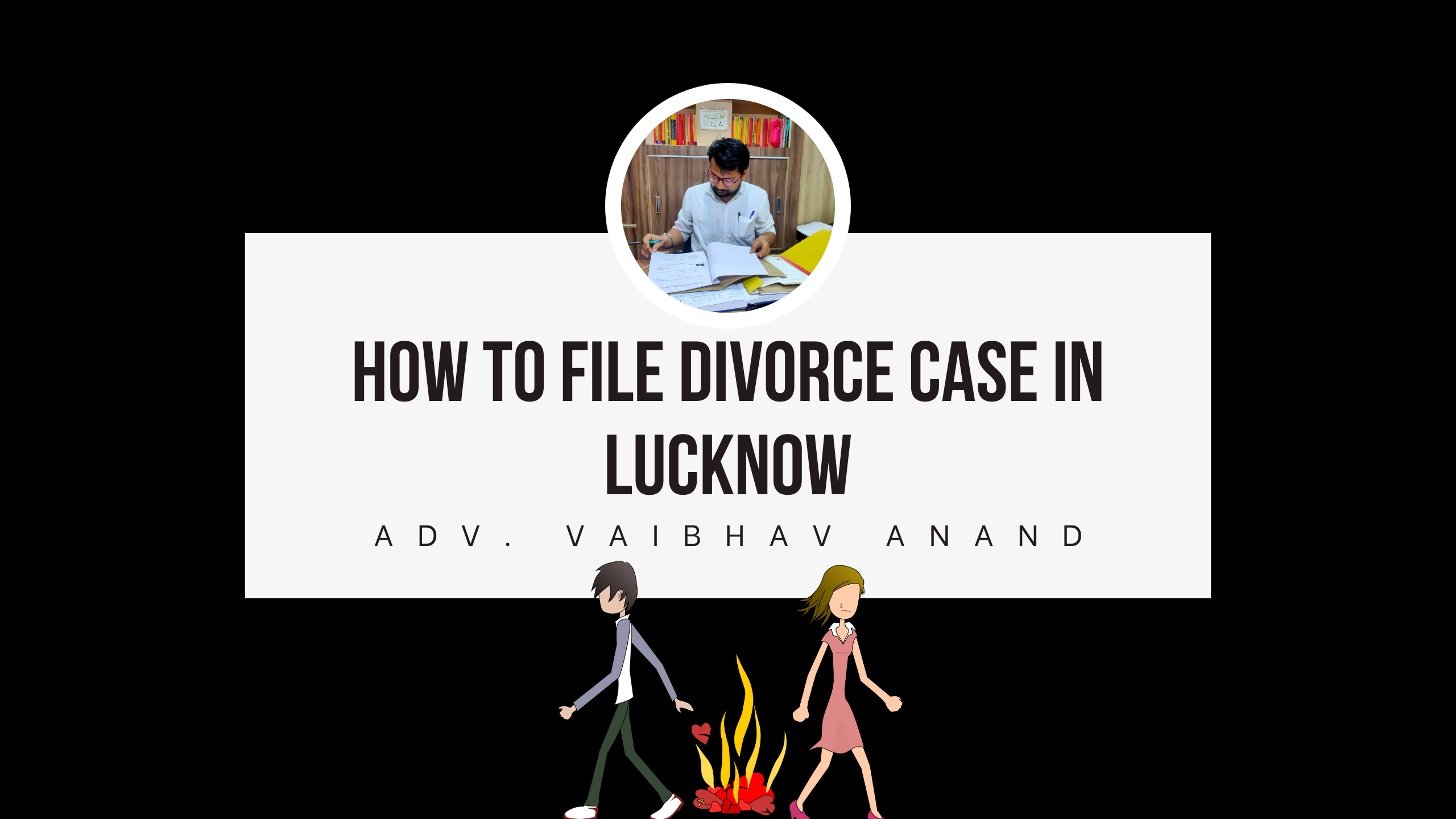Culpable Homicide And Murder: IPC Notes
Introduction
The Indian Penal Code (IPC) serves as the legal framework for various criminal offenses, particularly defining the distinctions between culpable homicide and murder. Understanding the nuanced differences between these terms is paramount in the context of criminal law. Culpable homicide and murder, demarcated by their intent, actions, and consequences as specified in the IPC, represent essential legal concepts. This article endeavors to explicate the legal definitions, elements, and differentiation between culpable homicide and murder. It further delves into relevant case law to illuminate their practical application in legal proceedings.
- The word ‘Homicide’ is derived from latin word ‘Homa’ which means human beings and ‘Cide’ which means killing.
- Homicide means killing of a human being by a human being.
- The law of Homicide, i.e. killing of a human being by a human being punishes the accused person but it is exempted under certain circumstances. Therefore, homicide can be divided into 2 parts.
- Lawful Homicides: Acts which are covered under the chapter of General Exceptions of IPC.
- Unlawful Homicides: Acts wherein a human being intentionally causes death of another human being and there is no justification for his act.

Culpable Homicide
- Define culpable: Sec 299 of IPC defines the offence of culpable homicide.
- Ingredients of sec 299 are:
- A person causes death.
- By doing an act.
- With the intention of causing death, or
- With the intention of causing such bodily injury as is likely to cause death, or
- With the knowledge that he is likely by such act to cause death.
- A person causes death
In order to prove the offence of culpable homicide, it must be shown that death of the human being has been caused by the act of the accused. ‘Death’ has been defined under section 46 of the Code as denoting the death of a human being, unless the contrary appears from the context. The relevant consideration for offence of culpable homicide is that the death is caused as a direct result of the act committed by the accused.
Joginder Singh vs State of Punjab (AIR 1979 SC 1876)
In this case, the deceased had teased the sister of the accused. In retaliation, the two accused went to the house of the deceased. On seeing the accused person, the deceased started running towards the field. Here the accused started chasing him and the deceased jumped into the well. As a result of this, the deceased sustained head injuries, which made him loose consciousness and thereafter he died due to drowning. The Supreme Court held that the accused were about 15 to 20 feet away from the deceased, when he jumped into the well. There was no evidence to show that the accused drove the deceased into the well or they had left no option but to jump into the well. Therefore the court acquitted the accused of the charge of murder.
Moti Singh vs State of Uttar Pradesh (AIR 1964 SC 900)
In this case the accused had shot the deceased in the abdomen. The injury was received on 9th February, 1960. Subsequently he was discharged from the hospital. There was no evidence as to whether he had fully recovered or not when he was discharged from the hospital. He however died on 1st of March, 1960. His body was cremated without any postmortem being done.
Here the Supreme Court held that the mere fact that the gunshot injuries were dangerous to life were not sufficient for holding the accused liable for the death of the deceased. Since there was no evidence to establish the cause of death, the accused could not be said to have caused the death. - By doing an act
- An ‘act’ according to section 33 of the Code denotes as well as a series of acts as a single act and the word ‘omission’ denotes as well a series of omissions as a single omission.
- Section 32 of the Code makes it specific that in every part of this Code, except where a contrary intention appears from the context, words which refer to acts done extend also to illegal omissions.
- With the intention of causing death
- For the offence of culpable homicide, it must be proved that there was an intention of the accused of causing death. Generally the intention of the accused is to be determined from the act of the accused.
- Intention with reference to culpable homicide, not necessarily means pre-meditation or preplanning. The expectation that the act of a person is likely to result in death is sufficient to constitute intention.
- With the intention of causing such bodily injury as is likely to cause death
- If the intention of the accused is to cause a particular injury, which is likely to cause death then it amounts to the offence of culpable homicide.
- The court should determine whether a bodily injury is likely to cause death by three things;
- The body part where the injury has been caused.
- The nature of injury.
- The nature of the weapon used.
- Difference between ‘intention to cause death’ and ‘intention to cause such bodily injury as likely to cause death’:
- The main difference between these two expressions is that of degree of criminality. The latter is a degree lower in scale of criminality than the former. But in both the cases, the intention is present and so the law does not make any distinction in punishment u/s 304 Part-I.
- Secondly, in the former the accused has the intention to cause death whereas in the latter he has no intention to cause death but only to cause such bodily injury as is likely to cause death.
- With the knowledge that he is likely by such act to cause death
- For the offence of culpable homicide it is to be shown that the accused was having knowledge that his act can cause death. Knowledge means consciousness. It is awareness of the consequences of the act. The offender should reasonably expect that the consequence of his act would probably result in the death of a person.
- If a person is driving at a very high speed in the crowded area than he is having knowledge that an accident can occur which can cause death of human being.
Ramesh Kumar vs State of Bihar (AIR 1993 SC 2317)
In this case, the accused persons who were four in number were armed with pistol, lathi and knife at the time of incident. They attacked the deceased with kicks and fist blows. The victim died because of shock and haemorrhage. Here the accused did not use pistol, lathi or knife to attack the deceased. - So the Court held that the accused had knowledge that by their acts they were likely to cause the death of the deceased though without any intention to cause death.
Sec 299 of IPC is appended with three explanations.
Explanation 1
- Causing bodily injury to a person labouring under a disorder, disease or bodily infirmity and thereby accelerating his death has been deemed to be causing his death under the first explanation. It is futile for the offender to contend that had the deceased not been labouring under a disorder, disease or bodily infirmity he would not have died.
- This explanation pre-supposes that the act on the part of the accused falls under at least one of the ingredients of section 299. If such is not the case and the prosecution fails to establish on the part of the accused either intention to cause death, or intention to cause such bodily injury as is likely to cause death, or knowledge that the bodily injury is such as is likely to cause death, this explanation will not be applicable.
Explanation 2:
- It provides for a situation wherein a person who has been injured could have recovered and escaped death, if, he had been given prompt and proper medical treatment. In such situations too, the fact that the injured person died because he could not avail of good medical treatment, cannot be ground for excusing the guilt of the person who inflicted the injury.
- Sellappan v. State of Tamil Nadu (Appeal (crl.) 123 of 2007)
In this case, the accused gave two blows with a stick to the deceased on the head. Subsequently the deceased was admitted to the hospital and after 1 week the deceased died because of the injuries. Here the Supreme Court held that the plea of the accused that with proper treatment, life of the deceased could have been saved is not tenable in view of explanation 2 to section 299. The accused was convicted for culpable homicide.
Explanation 3:
- It provides that if the death of the child is caused when still in the mother’s womb, it is not culpable homicide. However, if any portion of the child, comes out of the mother’s womb, even if it is not fully born, and if the death is caused to such a child, then it would amount to culpable homicide if requirements mentioned in section 299 are fulfilled..
- In other words, killing of a pregnant woman is only one homicide and not homicides because as long as a child is in the mother’s womb it has no independent existence of its own.
Murder
- Sec 300 of IPC defines murder with reference to the offence of culpable homicide defined u/s 299 of IPC.
- Only if an act falls under clauses 1-4 of sec 300, then culpable homicide will amount to murder.
- If the act comes under the exceptions given below sec 300 than it is culpable homicide not amounting to murder.
- Murder is the aggravated form of culpable homicide.
- It can be said that all murders are culpable homicide but all culpable homicides are not murder.
According to sec 300, Culpable Homicide amounts to murder in the following cases:
- If the act is done with the intention of causing death.
- If the act is done with the intention of causing such bodily injury as the offender knows to be likely to cause the death of the person to whom the harm is caused.
- If the act is done with the intention of causing such bodily injury as is sufficient in the ordinary course of nature to cause death.
- If the act is done with the knowledge, that it is so imminently dangerous that it must, in all probability, cause death, or such bodily injury as is likely to cause death, and such act is committed without any excuse for incurring the risk of causing death or injury.
- If the act is done with the intention of causing death:
- Intention connotes a conscious state in which mental faculties are roused into activity and summoned into action for the deliberate purpose of being directed towards a particular and specified act and which the human mind conceives and perceives before itself.
- Intention is what intention does. So, the intention of the person can be gathered from the action of the person.
- If a person administers a deadly poison to a man, then it is very clear that he has an intention to kill that man, because the cause and effect of the act are very clear. It is evident that the effect of poisoning is to cause instant death.
- Selvaraj vs State Of Tamil Nadu (1998) 9 SCC 308
In this case, because of some dispute the accused person stabbed the victim on his left chest with a knife and brought it downwards, due to which the intestines came out of the abdomen with bleeding. •Here, the Supreme Court held that the intention to kill the deceased was very clear from the act of the accused. So the accused was convicted for the offence of murder. - It is important to note that the first clause of sec 300, which is ‘act done with intention to cause death’ is identical to the first clause of sec 299, which is also ‘doing an act with the intention of causing death.’ So an act coming under clause (1) of sec 300 will also fall under clause (1) of sec 299, and in both instances it will be culpable homicide amounting to murder.
- With the intention of causing such bodily injury as the offender knows to be likely to cause death:
- If a person intentionally causes bodily injury, with the knowledge that such bodily injury will cause death of the person injured, then it will be culpable homicide amounting to murder.
- Here both the aspects of mens rea i.e. intention and knowledge are present.
- In case of offence falling under clause (2) of Section 300, there is first, the intention to cause bodily harm and next, there is the ‘subjective knowledge’ that death will be the likely consequence of the intended injury.
- It is said to be ‘subjective knowledge’, because it is the his own personal perception of the consequence of his act. Here ‘knowledge’ on the part of the offender imports certainty and not merely probability.
- The clause contemplates a situation, where the offender has a certain special knowledge regarding the peculiar situation or health condition of the particular victim that the intentional bodily injury is likely to be fatal.
- A, knowing that Z is laboring under such a disease that a blow is likely to cause his death, strikes him with the intention of causing bodily injury. Z dies in consequence of the blow. A is guilty of murder, although the blow might not have been sufficient in the ordinary course of nature to cause the death of a person in a sound state of health
- With the intention of causing such bodily injury as is sufficient in the ordinary course of nature to cause death:
- For the application of clause (3) of Section 300, two things need to be proved: one that the injury was intentionally inflicted and secondly, that the injury inflicted was sufficient in the ordinary course of nature to cause death of any person.
- Dhansai Sahu vs State of Orissa (AIR 1969 Ori 105)
In this case, the accused person assaulted an old man of about 70 years by wooden pole. The victim died of the consequences. The Orissa High Court convicted the accused for murder and held that the injuries caused were sufficient in the ordinary course of nature to cause death. - Virsa Singh vs The State Of Punjab (AIR 1958 SC 465)
In this case, the accused thrust a spear into the abdomen of the deceased. This injury caused his death. Here the Supreme Court held that the prosecution must prove the following before it can bring a case under third clause of sec 300 of IPC.- It must establish, quite objectively, that a bodily injury is present.
- The nature of the injury must be proved; these are purely objective investigations.
- It must be proved that there was an intention to inflict that particular injury, that is to say, that it was not accidental or unintentional, or that some other kind of injury was intended.
- It must be proved that the injury was sufficient to cause death in the ordinary course of nature.
- With the knowledge, that it is so imminently dangerous that it must, in all probability, cause death:
- Clause (4) of sec 300 contemplates generally, commission of the acts which are so imminently dangerous that it is likely to cause death. It contains the element of knowledge regarding the serious consequences of the act.
- Eg: A without any excuse fires a loaded cannon into a crowd of persons and kills one of them. A is guilty of murder, although he may not have had a premeditated design to kill any particular individual.
- Without any excuse for incurring the risk of causing death: It means that the accused person has committed the act and has no valid ground whatsoever for taking such a big risk of causing death. If there is some valid excuse available for incurring such a risk, obviously this clause has no application.
- Emperor vs Dhirajia (AIR 1940 All 486): In this case, a young village woman, was continuously being ill-treated by her husband. On the day of the incident they had again quarreled and the husband had threatened that he would beat her. The woman slipped away from home with her six month old child in the night. But after having gone for some distance she heard the sound of foot steps behind her. Turning around she saw that her husband was following her. She got in a panic and immediately jumped into a well along with her child. The child died even though she was saved. It was held that even though she knew that her act of jumping into the well along with her child was so imminently dangerous that it must cause death of the child in all probability, yet she had a valid excuse for incurring such risk as in a panic she had to decide at the spur of the moment as to how could she get away from her husband who was following her and she thought that jumping into the well was the only way and she did the same. Consequently, clause (4) of section 300 was not attracted and she was held guilty of culpable homicide not amounting to murder under clause (3) of section 299 of the Code.
Culpable Homicide not amounting to Murder
- Sec 300 provides five exceptional situations, the existence of which will remove a case from the purview of sec 300 and it will merely be culpable homicide not amounting to murder.
- The following are the exceptions provided under sec 300:
- Grave and sudden provocation.
- Exceeding Right of Private Defence.
- Public Servant exceeding his power.
- Sudden Fight. 5.Consent.
Exception 1 – Grave and Sudden Provocation:
Culpable homicide will not be murder, if, the offender on account of grave and sudden provocation, is deprived of his power of self-control and causes the death of a person.
This exception is subject to certain conditions:
- The provocation is not sought or voluntarily provoked by the offender as an excuse.
- The provocation is not given by anything done in obedience to the law, or by a public servant in the lawful exercise of the powers of such public servant.
- The provocation is not given by anything done in the lawful exercise of the right of private defence.
- K M Nanavati vs State of Maharashtra (AIR 1962 SC 605)
In this case, the accused was a naval officer. One day, his wife confessed to him that she had developed intimacy with the deceased. Enraged at this, the accused went to ship, took a revolver and six cartridges from the store of the ship, went to the flat of the deceased, entered his bedroom and shot him dead. Thereafter the accused surrendered himself to the police.
Here the Supreme Court held that the accused, after his wife confessed about the illicit relationship, may have momentarily lost control. He had thereafter dropped his wife and children to a cinema, left them there, went to his ship, took a revolver on a false pretext, loaded it with six rounds, did some official business there, and drove his car to the office of deceased and then to his flat, went straight to the bed-room of deceased and shot him dead. There was sufficient time for him to regain self-control. So the Court held that it is not a case under exception of sec 300 and convicted the accused for murder.
Here the Supreme Court has laid down certain guidelines relating to grave and sudden provocation:- The test of grave and sudden provocation is whether a reasonable person belonging to the same class of society as the accused, placed in a similar situation, would be so provoked as to lose his self control.
- In India, unlike in England, words and gestures may, under certain circumstances cause grave and sudden provocation so as to attract that Exception.
- The mental background created by any previous act of the victim can also be taken into consideration in judging whether the subsequent act could cause grave and sudden provocation.
- Fatal blow should be clearly traced to the influence of the passion arising from that provocation and not after the passion had cooled down by lapse of time or otherwise, giving room and scope for premeditation and calculation.
- Bhura Ram vs State of Rajasthan (2003) 9 SCC 205
In this case, the accused, armed with weapon and accompanied with others, entered into the hut of the deceased. Apprehending danger to his life, the deceased fired at one of the companions of the accused and thereby caused his death. The accused then attacked the deceased with an axe on his head and killed him. During trial he pleaded that the death of the companion caused grave and sudden provocation to him.
Here the Supreme Court refused to accept the plea as the accused himself was the aggressor and he solicited the provocation.
Exception 2 – Exceeding the Right of Private Defence:
- Under ‘General Exceptions’ a person has right of private defence of person and property. This right under certain circumstances even extends to causing death. This clause deals with the situation where a person exceeds the right of private defence. The factor of private defence reduces the gravity of offence from murder to culpable homicide.
- Before this exception can be availed of, it has to be proved that the accused had the right of private defence as given u/s 96-106 of IPC.
- If a person genuinely exercises his right of private defence within the prescribed limits, then he commits no offence. However, if the person exceeds the right of private defence and causes death of a person than it will amount to culpable homicide not amounting to murder. The most important circumstances in determining this factor is the intention of the offender.
- Eg: Z attempts to slap A. Here A takes out the gun and shoots Z in private defence. Z dies in consequence. Here A has exceeded his right of private defence and is guilty of culpable homicide not amounting to murder.
- Onkarnath Singh vs State of UP (AIR 1974 SC 1550)
In this case, the deceased had initially attempted to attack the accused. There was an incident of grappling between the parties. When the deceased was fleeing, the accused made a murderous assault and the victim died. Here the Supreme Court held that the force used was out of all proportion to the supposed danger, which no longer existed from the deceased. So, the accused was neither entitled to a right of private defence, nor to the benefit under exception 2 of sec 300. Therefore, the accused was convicted for the offence of murder.
Exception 3 – Public Servant Exceeding his Power
- The ingredients of exception 3 are:
- The offence must be committed by a public servant or by a person aiding the public servant.
- The public servant commits the act in discharge of his official duty.
- He should have exceeded the powers given to him by law.
- The act should be done in good faith.
- The public servant should have believed that his act was lawful and necessary for the due discharge of his duties.
- He should not have any ill-will towards the person whose death was caused.
- Dakhi Singh vs State (AIR 1955 All 379)
In this case, a thief was arrested by a police constable and was being taken in a train. The thief escaped from a running train. The constable pursued him. When the constable was not in a position to arrest him, he fired at him. But, in that process, the shot hit other person and he died.
Here the Supreme Court referred to Section 46, Criminal Procedure Code, which lays down that when a police officer arrests a person and such person forcibly resists the endeavour to arrest him or attempts to evade the arrest, such police officer may use all means necessary to effect the arrest; but this does not give a right to cause the death of the person unless he is accused of an offence punishable with death or imprisonment for life. So the accused has exceeded his power and is covered under exception 3 of sec 300 liable for culpable homicide not amounting to murder.
Exception 4 – Sudden Fight:
- Where the death is caused without premeditation in a sudden fight and in the heat of anger than it is culpable homicide not amounting to murder.
- Under this exception, the offender loses his power of reasoning due to heat of passion aroused suddenly.
- The word sudden fight implies the absence of previous deliberation or determination to fight.
- The word ‘fight’ conveys something more than a verbal quarrel. It implies the exchange of blows.
- Narayanan Nair Raghavan Nair vs State of Travancore (AIR 1956 SC 99)
In this case, there was a fight between the accused and one Velayuthan Nair. The deceased came up to them and tried to separate them. Here Velayuthan was the son-in-law of the deceased. The accused thereupon took the knife from his waist and hit out at the deceased. The deceased tried to ward off the blow and was hit in his left forearm. The accused struck again and this time the blow landed on the chest and the person died. Here the Court rejected the contentions of the accused and held that the accused had stabbed an unarmed man who made no threats against him, but was merely trying to stop the fight. The accused took undue advantage and stabbed the deceased. So the Court held the accused guilty of Murder.
Exception 5 – Consent:
Culpable Homicide is not Murder when;
- The death was caused with the consent of the deceased.
- The deceased was then above 18 years of age.
- That such consent was free and voluntary and not given through fear or misconception of facts.
- Dasrath Paswan vs State of Bihar (AIR 1958 Patna 190)
In this case, the accused who was a student of tenth class, failed in his examination thrice in succession. He was upset and frustrated by this failures and decided to put an end to his life and informed his wife. The wife thereupon requested him to kill her first and then kill himself. So the accused killed his wife but was arrested before he could end his life. Here the Court held that this case comes under exception 5 of sec 300 and therefore convicted the accused for culpable homicide.
Distinction between Culpable Homicide and Murder
- R vs Govinda (1876) ILR 1 Bombay 342
In this case, the accused knocked his wife down, put one knee on her chest, struck her two-three violent blows on the face with a closed fist causing extravasation of blood resulting in her death. Here the Court held the accused guilty of culpable homicide not amounting to murder as there was no intention to cause death and bodily injury was not sufficient in the ordinary course of nature to cause death.
Here the Court had made certain distinction between culpable homicide and murder. The difference between the two is only in degrees of intention and knowledge. If the degree of intention and knowledge is greater than the case would fall under murder. If it is a lesser degree of intention and knowledge than it is a case of culpable homicide not amounting to murder.
- A practical approach to distinguish whether a particular case comes under murder or culpable homicide is to appreciate the facts and apply the law as follows:
- The first stage is to determine whether the accused had done an act, which has caused the death of another person.
- The second stage is to establish whether the act of the accused would amount to culpable homicide.
- The next stage of enquiry is to ascertain whether the act would fall under any of the four clauses of sec 300 of IPC.
- The next stage is to determine whether the act falls within any of the five exceptions provided u/s 300 of IPC. If it does not fall under any of the exceptions than the act is murder. If the act falls under any of the exceptions then it will be culpable homicide not amounting to murder.
State of Maharashtra v. Narendra and Ors (2019):In this case, the accused had a longstanding dispute with the victim. An altercation arose, resulting in the accused inflicting injuries on the victim, leading to his death. The court, after analyzing the evidence and testimonies, found that the accused had a specific intent to cause grievous injuries that led to the victim’s death. The court held that the act fell within the definition of murder under the IPC and convicted the accused accordingly.
Culpable homicide and murder, as delineated within the Indian Penal Code, are pivotal legal distinctions characterized by their unique elements and legal implications. The differentiation between these concepts hinges on the accused’s intention and knowledge regarding the act resulting in death. Case law illustrates the critical significance of these legal distinctions in court decisions and the enforcement of the law, ensuring justice and suitable legal consequences for criminal actions based on the established legal criteria. Understanding these distinctions is essential in the legal arena and significantly influences the adjudication of criminal cases governed by the Indian Penal Code.
References








